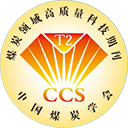Abstract:
This study focused on simulating nickel-contaminated soil to remediate soil contaminated with heavy metals due to coal gangue accumulation in mining areas. The primary component of the remediation agent was municipal solid waste incineration ash, supplemented with fly ash, bentonite, reduced iron powder, and ferrous sulfide. Through leaching experiments simulating the leaching mass concentration and migration patterns of heavy metals from coal gangue, the research investigated the influence of additive types and dosages on nickel immobilization/stabilization efficiency. Suitable additive types and dosages were then selected, followed by an analysis of nickel immobilization/stabilization mechanism. The results show that when the mass ratio of stabilizer to municipal solid waste incineration ash is 50%, the mass ratio of curing agent to fly ash is 5%, and the mass ratio of reductant to iron powder is 5%, the solidification/stabilization efficiency of the remediation agent is the highest, reaching 99.61%, and the leaching concentration of nickel in soil is the lowest, 0.047 mg/L. This research outcome provides a feasible soil remediation solution for environmental management in mining areas.



 下载:
下载: